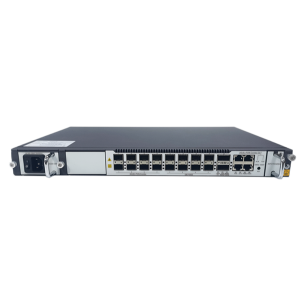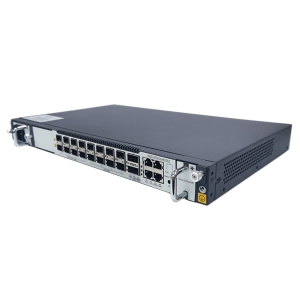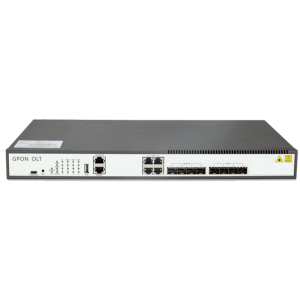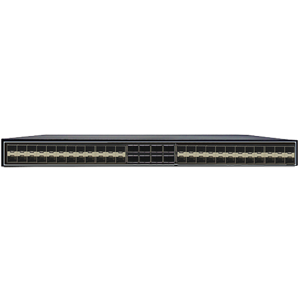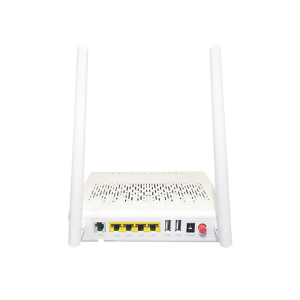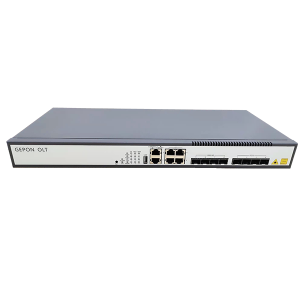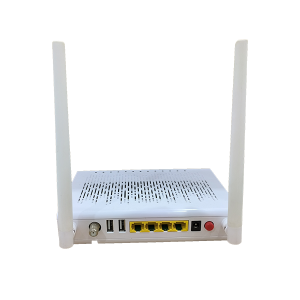Products
What is the difference between XGSPON OLT and GPON OLT?
What is the difference between XGSPON OLT and GPON OLT?,
,
Product Characteristics
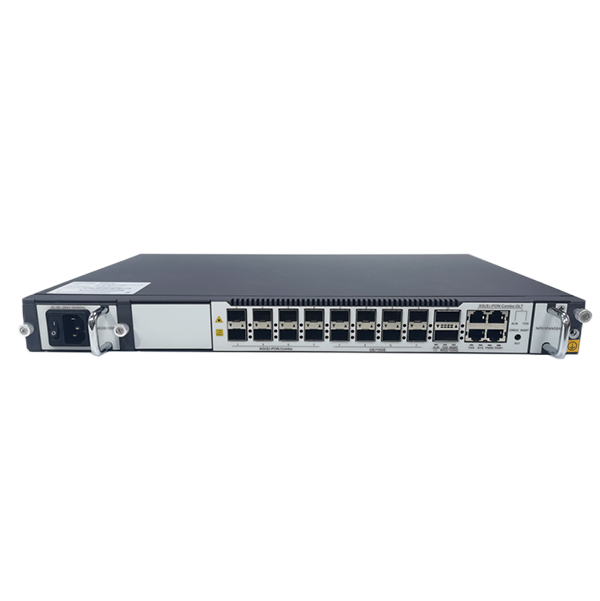
● 8 x XG(S)-PON/GPON Port
● Support Layer 3 Function: RIP/OSPF/BGP/ISIS
● 8x10GE/GE SFP + 2x100G QSFP28
● Support multiple link redundancy protocols: FlexLink/STP/RSTP/MSTP/ERPS/LACP
● 1 + 1 Power Redundancy
LM808XGS PON OLT is a highly integrated, large-capacity XG(S)-PON OLT for operators, ISPs, enterprises, and campus applications. The product follows the ITU-T G.987/G.988 technical standard, and can be compatible with three modes of G/XG/XGS at the same time.The asymmetric system (up 2.5Gbps, down 10Gbps) is called XGPON, and the symmetric system (up 10Gbps, down 10Gbps) is called XGSPON.The product has good openness, strong compatibility, high reliability and complete software functions,Together with the optical Network unit (ONU), it can provide users with broadband, voice, video, surveillance and other comprehensive service access. It can be widely used in operators’ FTTH access, VPN, government and enterprise park access, campus network access, ETC. XG(S)-PON OLT provides higher bandwidth. In application scenarios, service configuration and O&M completely inherit GPON.
LM808XGS PON OLT is only 1U in height, easy to install and maintain, and save space. Supports mixed networking of different types of ONUs, which can save a lot of costs for operators.In the telecommunications sector, keeping up with the latest technology is crucial for businesses to stay competitive. Among the many advanced options available, the two most popular choices are XGSPON OLT and GPON OLT. Both technologies provide high-speed Internet access and serve as the backbone infrastructure for delivering broadband services to end users. However, there are some notable differences that set them apart. In this article, we’ll explore these differences and help you understand which option is better suited for your business needs.
First, let’s understand what XGSPON OLT and GPON OLT stand for. OLT stands for Optical Line Terminal, while XGSPON and GPON are two different standards for passive optical networks. XGSPON is the latest and most advanced standard, providing faster speeds and greater bandwidth than GPON. XGSPON operates symmetrically at 10Gbps, while GPON operates at a lower downstream rate of 2.5Gbps and an upstream rate of 1.25Gbps.
One big difference between XGSPON OLT and GPON OLT is the number of available ports. XGSPON OLT typically has 8 ports, while GPON OLT typically has 4 or fewer ports. This means that XGSPON OLT can connect a larger number of ONUs (Optical Network Units) or end users, making it more suitable for businesses with a large number of users.
Another notable difference is Layer 3 functionality. XGSPON OLT provides rich layer three functions, including RIP/OSPF/BGP/ISIS protocols, which enhances routing capabilities and allows more complex network configurations. On the other hand, GPON OLT has limited routing functions and usually only has basic protocols such as RIP.
Uplink port capacity is another key factor to consider. XGSPON OLT offers uplink port options up to 100G, while GPON OLT typically supports lower uplink capacity. This higher uplink capacity makes XGSPON OLT a better choice for enterprises that require greater bandwidth for both upstream and downstream traffic.
Both XGSPON OLT and GPON OLT provide dual power supply options. This redundancy feature ensures uninterrupted service even in the event of a power failure. But it’s worth noting that not all OLTs on the market offer dual power options, so it’s crucial to choose a reputable supplier that can offer this feature.
In terms of security, both XGSPON OLT and GPON OLT provide functions such as secure DDOS and virus protection. These security measures protect network infrastructure from potential cyber threats and ensure end users have reliable, secure connections.
Compatibility with other brands of ONUs is an important consideration when choosing an OLT. Both XGSPON OLT and GPON OLT provide compatibility with various ONUs, ensuring flexibility in network deployment and integration.
In terms of system management, XGSPON OLT and GPON OLT provide comprehensive options such as CLI, Telnet, WEB, SNMP V1/V2/V3, and SSH2.0. These management protocols allow network administrators to effectively monitor and control OLTs and ONUs.
In short, both XGSPON OLT and GPON OLT are excellent choices for enterprises that want to deploy high-speed broadband infrastructure. XGSPON OLT offers faster speeds, more ports, advanced Layer 3 capabilities, higher uplink capacity and powerful security features. On the other hand, for smaller networks with fewer users, GPON OLT is a more cost-effective option. Ultimately, the choice between XGSPON OLT and GPON OLT depends on your business’s specific requirements and budget. Choosing a reputable vendor like our company with expertise and industry experience is critical to ensuring a reliable and seamless network deployment. With more than 10 years of experience in China’s communications field, we provide a wide range of products and services, including OLT, ONU, switches, routers and 4G/5G CPE. Our products support GPON, XGPON and XGSPON and feature rich Layer 3 capabilities and advanced security features. We offer OEM and ODM services, ensuring flexibility and customization options for our customers. Contact us today to discuss your networking needs and find the best solution for your business.
| Device Parameters | |
| Model | LM808XGS |
| PON Port | 8*XG(S)-PON/GPON |
| Uplink Port | 8x10GE/GE SFP2x100G QSFP28 |
| Management Port | 1 x GE out-band Ethernet port1 x Console local management port |
| Switching Capacity | 720Gbps |
| Forwarding Capacity (Ipv4/Ipv6) | 535.68Mpps |
| XG(S)PON Function | Comply with ITU-T G.987/G.988 standard40KM Physical differential distance100KM transmission logical distance1:256 Max splitting ratioStandard OMCI management functionOpen to other brand of ONTONU batch software upgrade |
| Management Function | CLI, Telnet, WEB, SNMP V1/V2/V3, SSH2.0Support FTP,TFTP file upload and downloadSupport RMONSupport SNTPSystem work logLLDP neighbor device discovery protocol802.3ah Ethernet OAMRFC 3164 SyslogSupport Ping and Traceroute |
| Layer 2 Function | 4K VLANVLAN based on port, MAC and protocolDual Tag VLAN, port-based static QinQ and fiexible QinQ128K Mac addressSupport static MAC address settingSupport black hole MAC address filteringSupport port MAC address limit |
| Layer 3 Function | Support ARP learning and agingSupport static routeSupport dynamic route RIP/OSPF/BGP/ISISSupport VRRP |
| Ring Network Protocol | STP/RSTP/MSTPERPS Ethernet ring network protection protocolLoopback-detection port loop back detection |
| Port Control | Two-way bandwidth controlPort storm suppression9K Jumbo ultra-long frame forwarding |
| ACL | Support standard and extended ACLSupport ACL policy based on time periodProvide flow classification and flow definition based on IP headerinformation such as source/destination MAC address, VLAN, 802.1p,ToS, DSCP, source/destination IP address, L4 port number, protocoltype, etc. |
| Safety | User hierarchical management and password protectionIEEE 802.1X authenticationRadius&TACACS+ authenticationMAC address learning limit, support black hole MAC functionPort isolationBroadcast message rate suppressionIP Source Guard Support ARP flood suppression and ARP spoofingprotectionDOS attack and virus attack protection |
| Redundancy Design | Dual power Optional Support AC input, double DC input and AC+DC input |
| Power Supply | AC: input 90~264V 47/63Hz DC: input -36V~-75V |
| Power Consumption | ≤90W |
| Dimensions(W x D x H) | 440mmx44mmx270mm |
| Weight (Full-Loaded) | Working temperature: -10oC~55oC Storage temperature: -40oC~70oC Relative humidity: 10%~90%, non-condensing |
Products categories
-

Phone
-

Email
-

Whatsapp
-

Skype
-

Top



